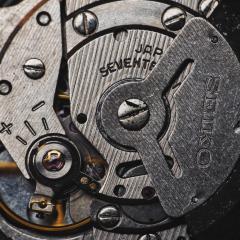Oil is oil or is it??
-
Similar Content
-
Recently Browsing
- No registered users viewing this page.
-
Topics
-
Posts
-
By RichardHarris123 · Posted
I think it should be between the red and black. Couple of things to take into consideration, the spring could be set affecting the power reserve or a shorter spring with will have the same effect. -
By watchfellow · Posted
I think that a 814/825 stem would work, there are a lot of compatible parts between these. -
By watchfellow · Posted
Hi everyone, I put together a Venus 178 recently, but found that the hour counter "creeps" ie. runs when the chrono is disengaged. This is the similar type of setup as the Omega 861, where the hour counter is driven off the mainspring barrel, but stopped when the chrono is disengaged by a friction spring. Am I correct in assuming that the friction spring for the hour counter driving pinion should be dry? I am guessing that the issue will be either the spring or the driving pinion, but while the driving pinion has some wear the spring looks decent. I've attached a couple of photos in case anyone has any tips. Thanks in advance! -
By watchfellow · Posted
Thanks everyone for the replies. It seems setting the hand is a bit of a guessing game, and I thought there would be a very specific way to do it. Since the reserve indicator hand moves clockwise as the spring is wound, I tried setting it right at the start of the black side. But setting it there doesn't really make sense, because by the time the spring is halfway wound, the hand is only at the end of the red side... In my head halfway wound shouldn't mean the hand is still "in the red." -
Lovely part of the country! I spend most of my days driving along the A64 for work in and around York. I'll be sure to drop plenty of questions soon! I've actually got a couple of watches on the way that I'm pretty sure I'll need some help with! They look pretty beat up from the pics but I love a challenge and an excuse to buy more tools 🤣
-






Recommended Posts
Join the conversation
You can post now and register later. If you have an account, sign in now to post with your account.
Note: Your post will require moderator approval before it will be visible.